Advertisement
A 'Strange' New England Coral May Hold Secrets To Combating Climate Change
Resume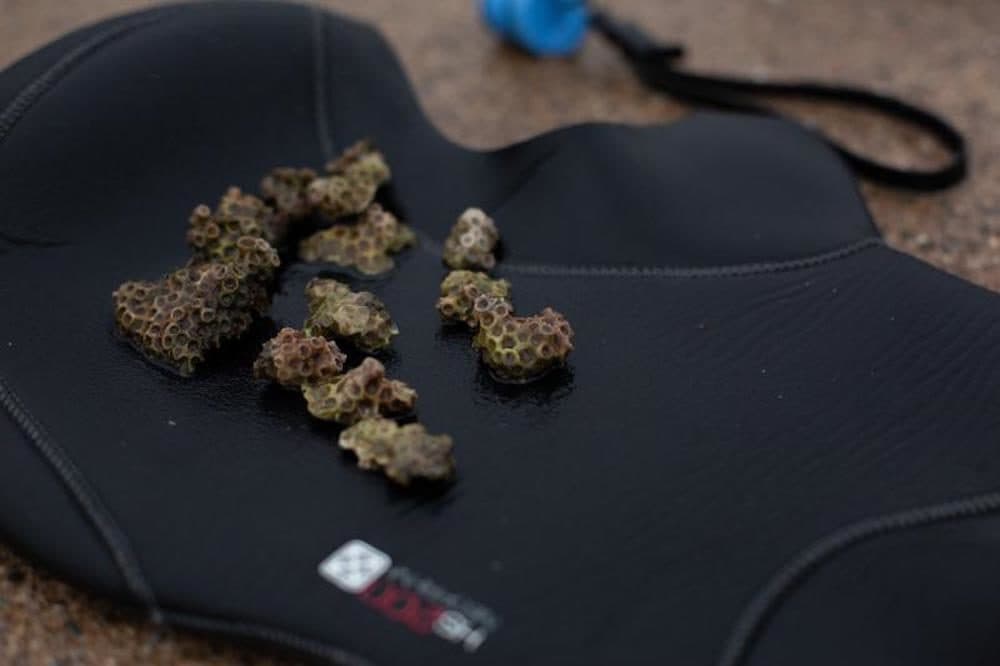
When we think about animals that inhabit the cold New England ocean, sharks, seals, or lobsters may spring to mind. But there’s another critter lurking in the deep off our coast, and it’s one that may hold valuable secrets that could help its tropical cousins.
And you may not have even known that it’s actually an animal: coral.
“The coral that exists in Connecticut is called Astrangia poculata,” said Sean Grace, a biologist at Southern Connecticut State University. Grace said the name Astrangia captures the surprise scientists felt when they observed this coral centuries ago.
“You can imagine back then, they pulled it up and looked at it and went, ‘Well, that’s a strange thing to see off the coast of New Jersey, the mid-Atlantic,’” Grace said.
Today this species of Astrangia, also known as the “northern star coral,” is dispersed widely. From southern New England, it goes down the Eastern Seaboard into the Gulf of Mexico.
Corals are invertebrates. They’re not plants. They’re definitely not rocks. Instead, corals are related to jellyfish and anemones.
As they build, corals create important ecosystems, preventing coastal erosion and providing habitat for thousands of creatures.
Many have a symbiotic relationship with algae called “zooxanthellae.” It’s what makes tropical corals so colorful. When corals lose that algae, they can die. But Grace says for Astrangia, that’s not the case.
“When you find a coral that’s become white, it’s called bleached,” Grace said. “Yet in New England, we have this coral species that exists with and without zooxanthellae, and it does fine.”
Just one of Astrangia’s many mysteries.
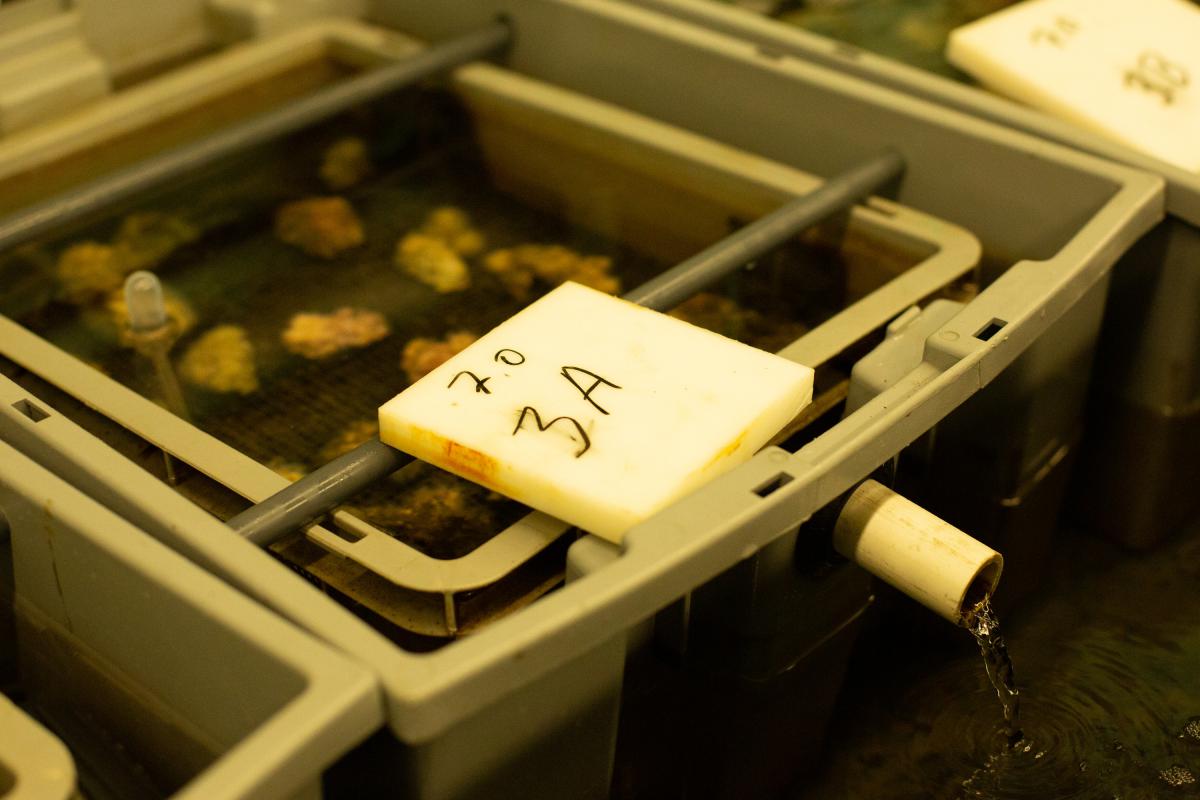
Inside a lab run by the National Oceanic and Atmospheric Administration in Milford, Grace and NOAA scientist David Veilleux dug deeper into Astrangia’s other secrets.
Veilleux showed me an array of test bays, gesturing to a labyrinth of nearby pipes that connect with Long Island Sound.
“The seawater comes in, we’ve got them at 18 degrees Celsius,” Veilleux said. “This is raw seawater going through these.”
Scientists then bubbled in carbon dioxide. In the sky, carbon dioxide traps heat, raising Earth’s average temperature. In the ocean, it causes seawater to become more acidic, which can be bad for coral skeletons.
Grace tweaked the pH across the bays, simulating possible future ocean chemistry. He said the experiment will go on for a few more weeks to see how the corals react.
“These are the most basic studies that we can start with,” Grace said. ”But if we go from this and we look at the responses that these corals have, we can then start looking at their genes.”
Diving To Find A Genetic Playbook
In those genes, Grace said, are secrets. A coded manual, which might explain how the northern star coral survives without algae or withstands the cold of New England’s waters.
Grace said once those genes are fully understood, perhaps they could be grown into tropical corals to make them more resistant. But first, a lot more basic research has to happen, like diving to find Astrangia samples.
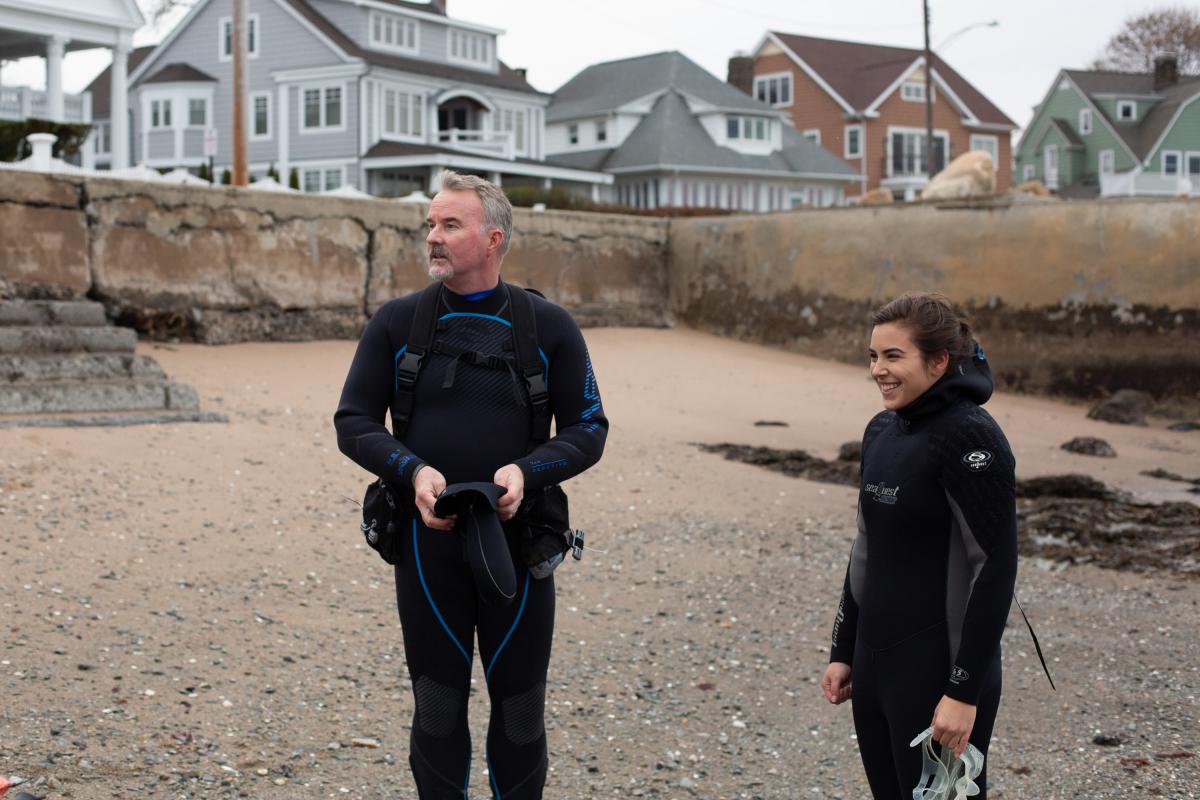
Grace and I left the lab, driving a few miles in the rain to a nearby beach. The plan was to collect colonies of Astrangia, which would be sent to Penn State University for genetic testing.
We were joined by one of Grace’s former students, Gabriella DiPreta.
As she put on her diving gear to get ready to go underwater, DiPreta remembered the first time she saw Astrangia, on a dive in Narragansett Bay.
“We descended down and I just saw so many hundreds of white and brown colonies everywhere,” DiPreta said. “It really intrigued [me] because I, as many other people in New England and around the U.S., [didn’t] even know that we have coral up here, because of these cold temperatures.”
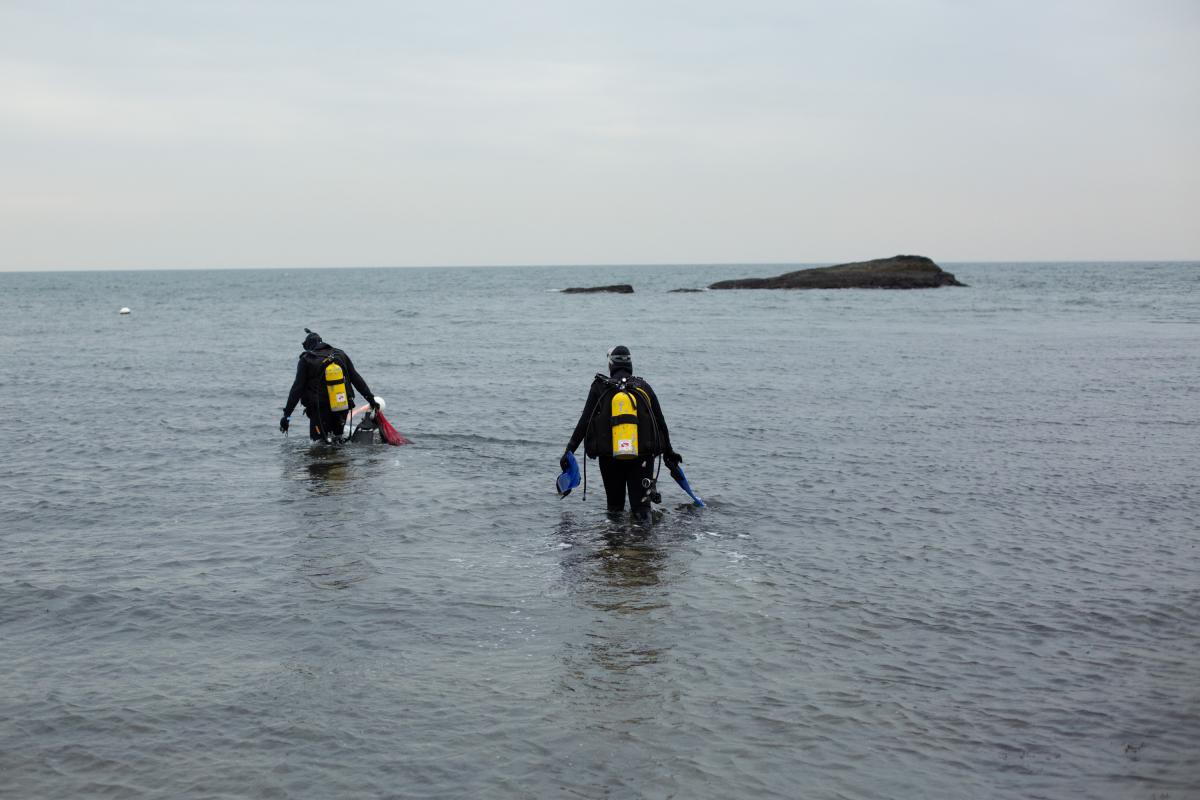
The pair sloshed into the murky ocean, disappearing beneath the water’s surface. And what happened next illustrated the challenges of fieldwork for ocean scientists.
Nearly an hour later, Grace came back. He was breathless and very apologetic.
He lost his dive bag, “but we got some, so good enough,” Grace said.
Grace poured out the handful of coral, which he said was enough material for genetic testing.
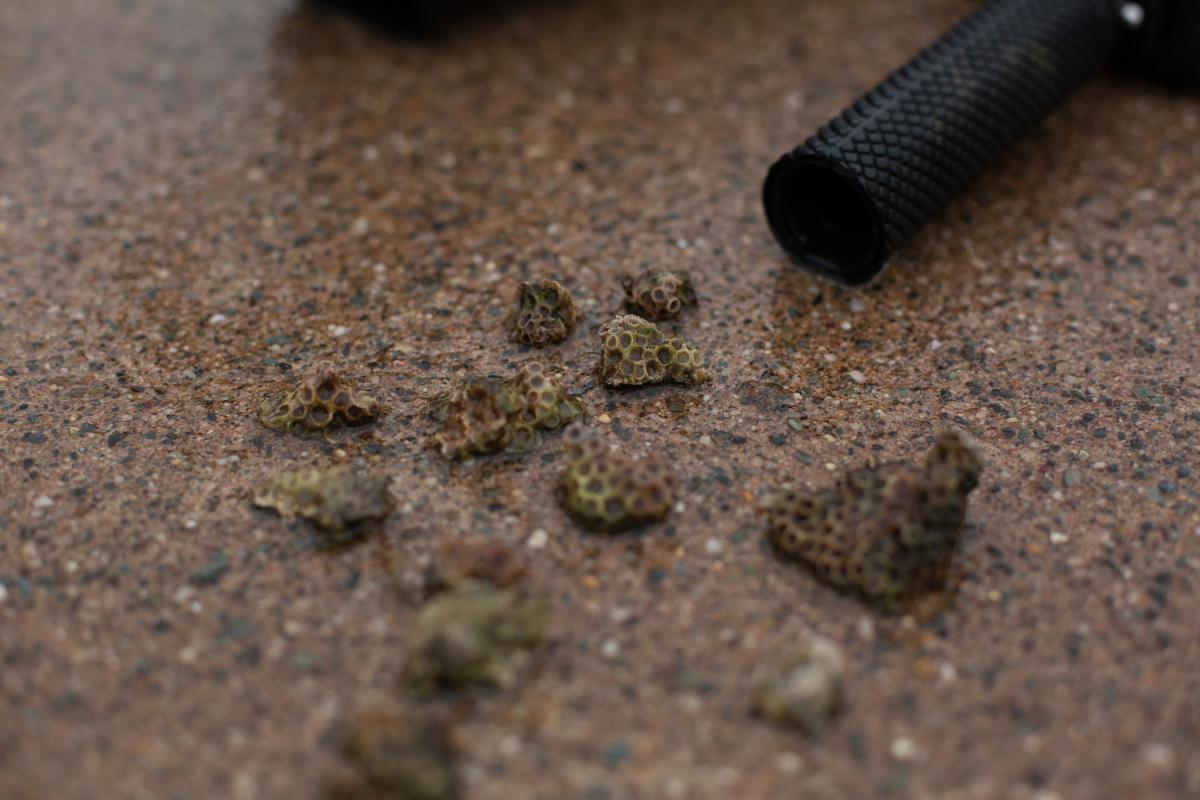
By now, the beach was abandoned. All of us were wet and cold, eager to get inside and warm up.
But for a moment, we stopped to stand in the rain and share this strange sight, a hardy coral resting before us on a cold New England beach that may harbor the secrets that could save tropical corals thousands of miles away.
This story is a production of the New England News Collaborative and was originally published by Connecticut Public Radio.
This segment aired on January 1, 2020.